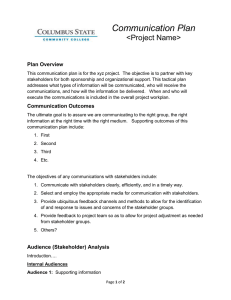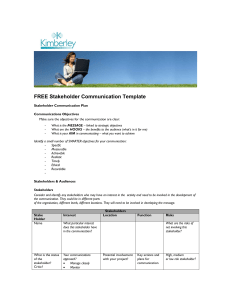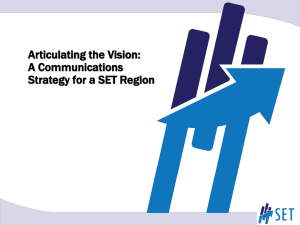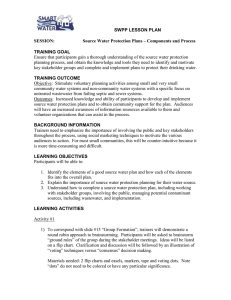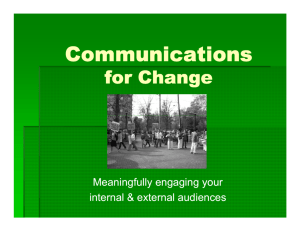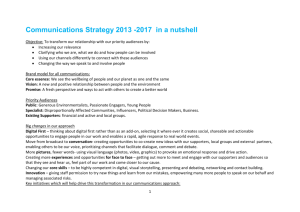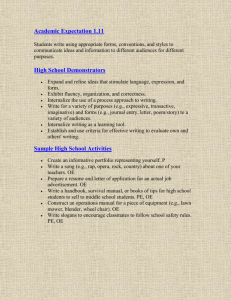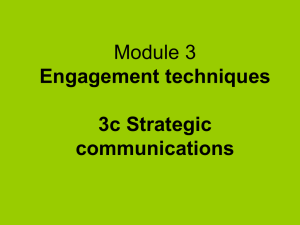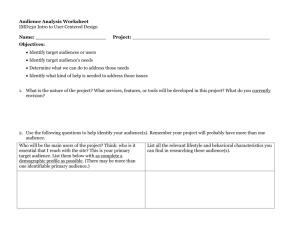Eight questions the media always ask in a crisis
advertisement
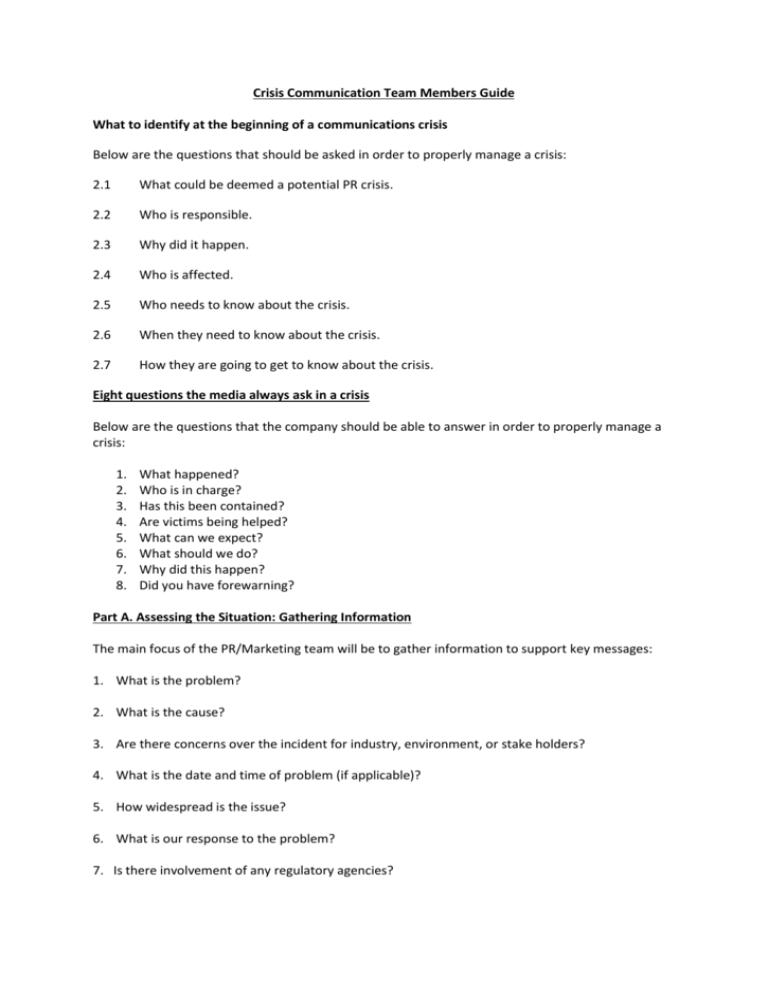
Crisis Communication Team Members Guide What to identify at the beginning of a communications crisis Below are the questions that should be asked in order to properly manage a crisis: 2.1 What could be deemed a potential PR crisis. 2.2 Who is responsible. 2.3 Why did it happen. 2.4 Who is affected. 2.5 Who needs to know about the crisis. 2.6 When they need to know about the crisis. 2.7 How they are going to get to know about the crisis. Eight questions the media always ask in a crisis Below are the questions that the company should be able to answer in order to properly manage a crisis: 1. 2. 3. 4. 5. 6. 7. 8. What happened? Who is in charge? Has this been contained? Are victims being helped? What can we expect? What should we do? Why did this happen? Did you have forewarning? Part A. Assessing the Situation: Gathering Information The main focus of the PR/Marketing team will be to gather information to support key messages: 1. What is the problem? 2. What is the cause? 3. Are there concerns over the incident for industry, environment, or stake holders? 4. What is the date and time of problem (if applicable)? 5. How widespread is the issue? 6. What is our response to the problem? 7. Is there involvement of any regulatory agencies? 8. What are the possible actions that can be taken to address the issue? 9. Have any solutions been put into practice? 10. What are the steps that will be put in place to prevent future occurrences? Part B. Developing Key Situational Messages Method I. II. III. IV. V. Identify Key Stakeholders State the issue to address and keep the focus. Develop three key messages Supporting Information amplifies the key messages by providing additional facts or details. Supporting information can also take the form of visuals, analogies, personal stories or citations of credible information sources. Identifying Key Stakeholders Consider which key audiences or stakeholders need to be targeted. Revisit this list of potential stakeholders as the crisis evolves to reflect changes in audiences as needed. Stakeholder Employees Employers Learners Industry Associations/ Governing Bodies Media Potential Communication Vehicles E-mail Newsletter Personal contact Intranet Webinars Information packet and letter Personal meetings E-mail or e-newsletter Web site Media Social Media Phone calls Web site Media Email Social Media Conference calls Personal meetings E-mail Web site Media Initial response statement Press release Threshold Questions What do they need to know about the source of the problem? How is the company resolving the situation? What are the employees expected to do regarding the situation? What do they need to know about the source of the problem? What actions do they need to take to resolve the situation? What information will they provide to their consumers, customers and/or students? What do they need to know about the source of the problem? How is the company resolving the situation? What are the students expected to do regarding the situation? Could the association be an ambassador for you? Will the association help solicit testimony from experts on the issue? Will the news media get information on the situation whether you give it to them or not? Web site News conference Advertising Third-party groups By-lined editorial E-mail Will the company’s reputation be affected unless information is aggressively released through the news media? Is there a broader, national industry group that can more appropriately handle the situation? Can this become an industry issue rather than an individual operation’s issue? Useful Third Party Resources A list of third parties that offer a vital service, can support our position or can offer further clarification when a crisis strikes such as key organisations that can address the crisis issue and that media can contact. Government Departments Employees Customers Allied organisations Part C. Press Release The first press release should include at a minimum the who, what, where and when of the situation derived from the facts that have been gathered from reliable sources and confirmed. A prepared, generalised statement has been prepared that can be used to make an initial general response to the media when knowledge about the crisis first becomes known on a widespread basis or by journalists. (See below) Information materials or fact sheets about the company, processes, area or machines involved may need to be created by the Creative Services Coordinator/Graphic Designer to facilitate the understanding of the situation to the media to prevent them interpreting the situation erroneously. When drafting a press release during a crisis situation, there are four “R’s” to remember; Regret: Responsibility: Reform: Restitution: The first thing you should do is express concern that a problem has developed – even if it was not the company’s fault. Whether the cause of the problem was the operation’s fault or not, the operation should be prepared to take responsibility for solving the problem. Your actions will reinforce its words and provide a credible demonstration of the budsiness’ commitment to doing the right thing. Your various stakeholder audiences must know the operation is taking steps to ensure the problem will not happen again. If appropriate, detail how you and the industry will help those who have been affected by the problem. Sample Crisis News Release A (what happened) at (location) involving (who) occurred today at (time). The incident is under investigation and more information is forthcoming. A news conference will take place at (place) at (time) with (spokesperson) A written statement will be issued at (time) via email. (Other pertinent information.) Appendix Media Contact Log This log helps with keeping track of media enquiries and interviews. Adding these same contacts to the updated media list will be very important. Date_________________________________________________________________ Time ________________________________________________________________ Journalist Name _______________________________________________________ Media Outlet ______________________________________________________________ __ Phone Number _________________________________ E-mail Address ________________________________________________________________ Question(s)/ Notes _____________________________________________________________ ______________________________________________________________________ ______________________________________________________________________ ______________________________________________________________________ _____________________________________________________________________ Media Deadline Date ______________________________________________________________ Date & Time of Response to Media _________________________________________ _______
